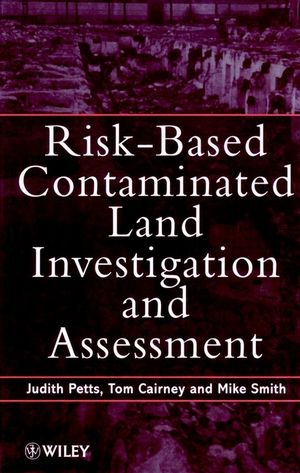Risk-Based Contaminated Land Investigation and AssessmentISBN: 978-0-471-96608-1
Hardcover
352 pages
October 1997
 This is a Print-on-Demand title. It will be printed specifically to fill your order. Please allow an additional 10-15 days delivery time. The book is not returnable.
|
||||||
Environmental Consultancy Recognition of contaminated land as a potential environment risk problem has come relatively late. However, in the 1990s there is an international agreement that dealing with such problems benefits from a risk management approach. This book provides a unique, practical guide to the effective conduct of risk assessments for contaminated sites. The risk-based approach requires recognition of site investigation as a component of (not merely an adjunct to) risk assessment and a systematic gathering of quality data relevant to making judgements about risks. This is an integrated and multidisciplinary subject. The book provides an understanding of the regulatory and social context in which contaminated land risks are managed; the interdisciplinary requirements, as well as the methodologies and their limitations for investigation and assessment. The opening chapters provide risk assessment and management background, stressing pragmatic approaches to the former. The central chapters address the means of optimising the gathering of systematic information relevant to the source-pathway-target chain of concern, including the value of multi-stage investigations. The final chapters discuss the assessment of information and data, considering qualitative, semi-quantified and quantified risk assessment approaches and the use of the findings in decision making. The book has been written to complement developing guidance and requirements in the United Kingdom, but with international comparisons. The issues which underpin effective contaminated land risk assessment are universal. The book is presented so as to be understood by readers from a variety of disciplines and with different responsibilities. It will also be of value to final year undergraduates and postgraduates in civil engineering, environmental science, environmental technology, environmental chemistry and geography. It will be of relevance to environmental and engineering consultants, companies and organisations owning or purchasing potentially contaminated land and to officers in the regulatory authorities.



